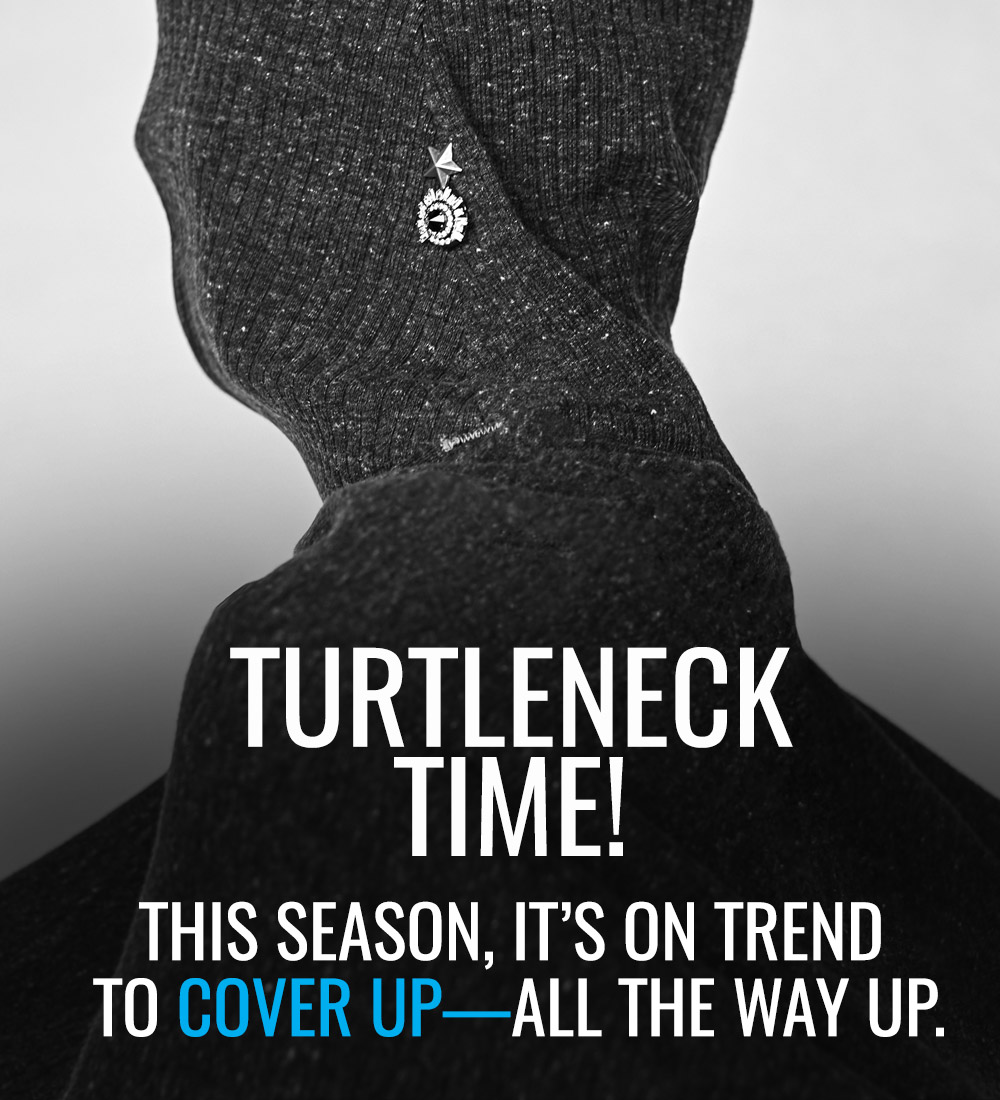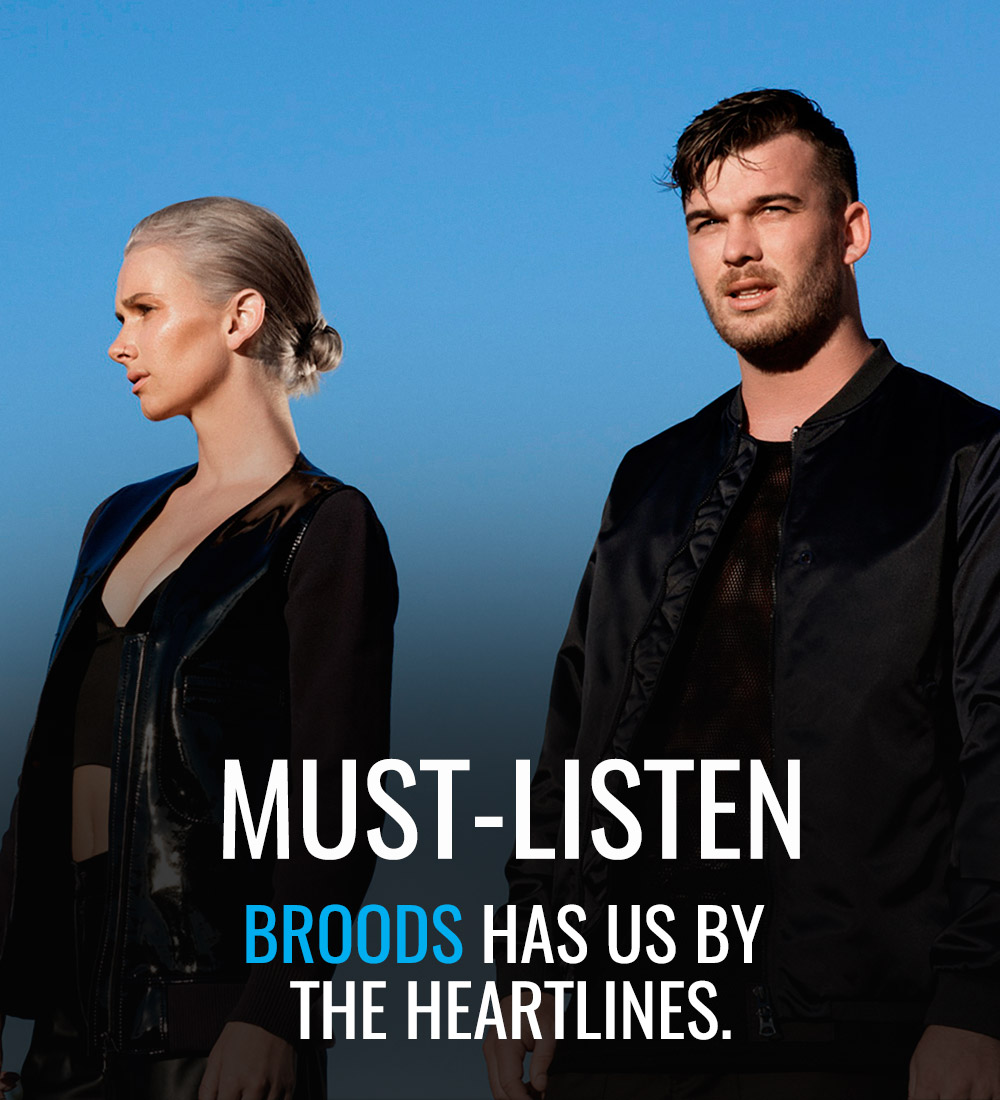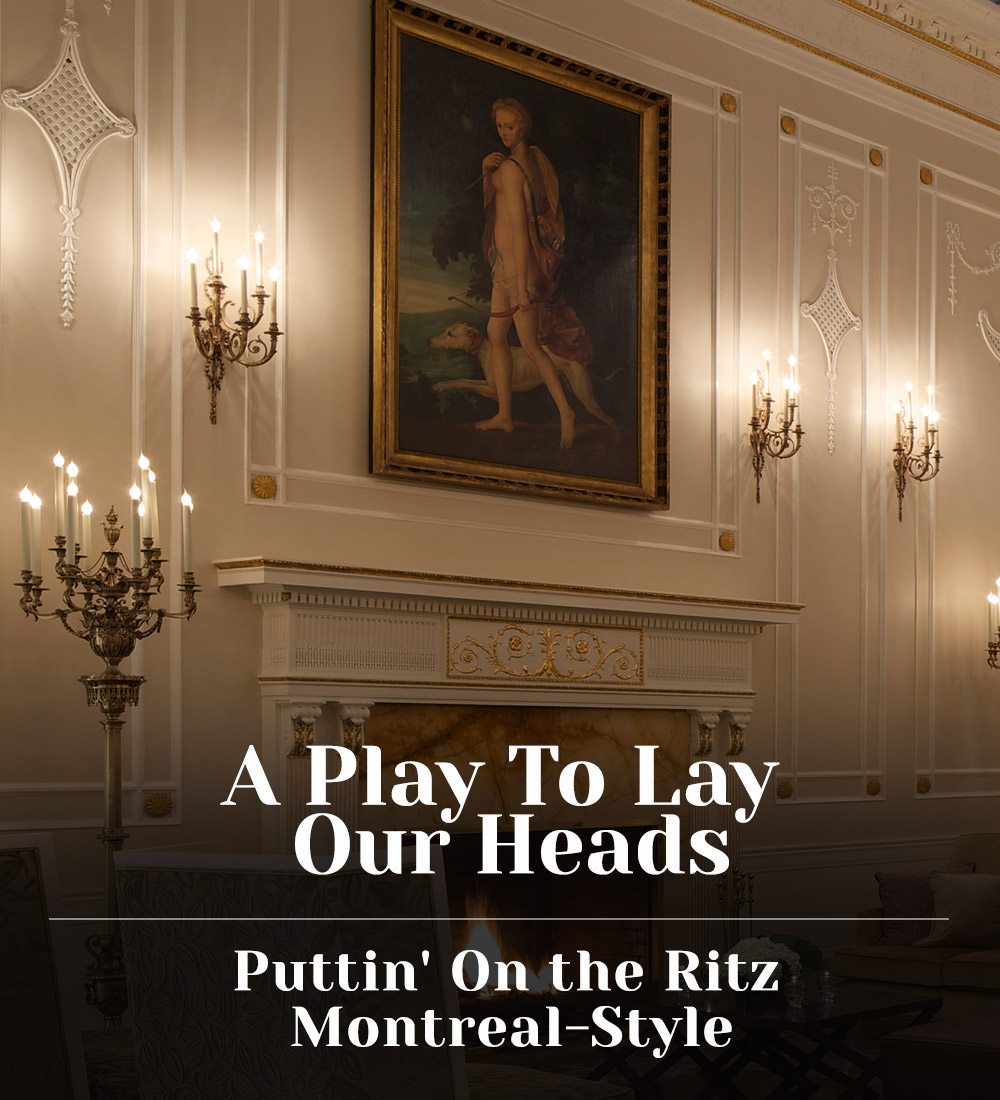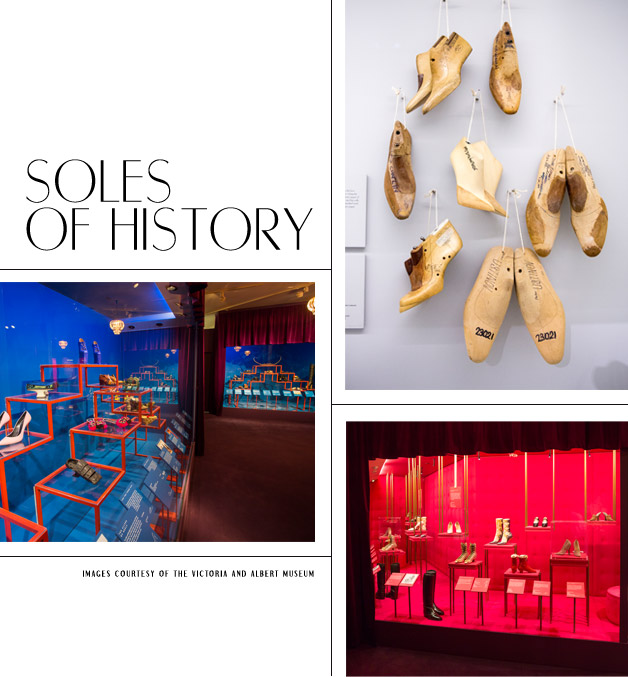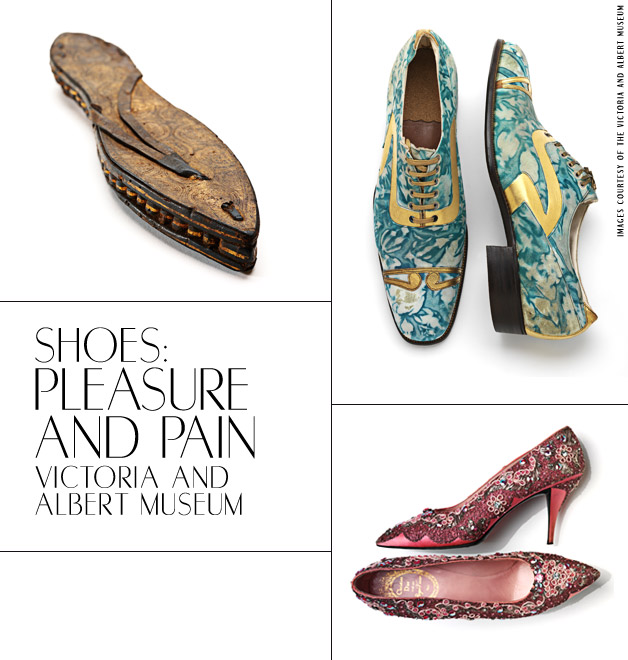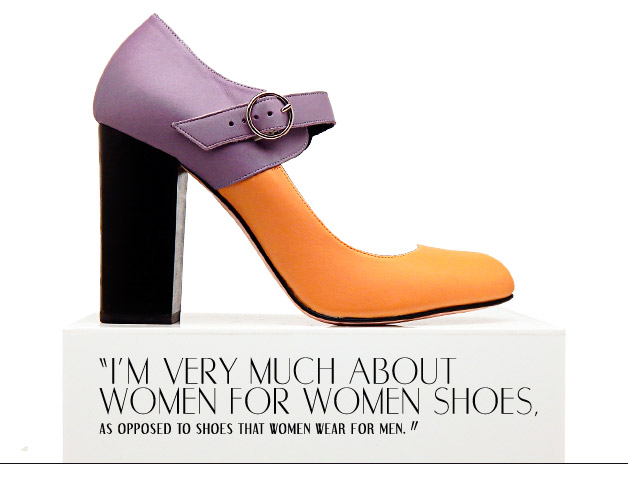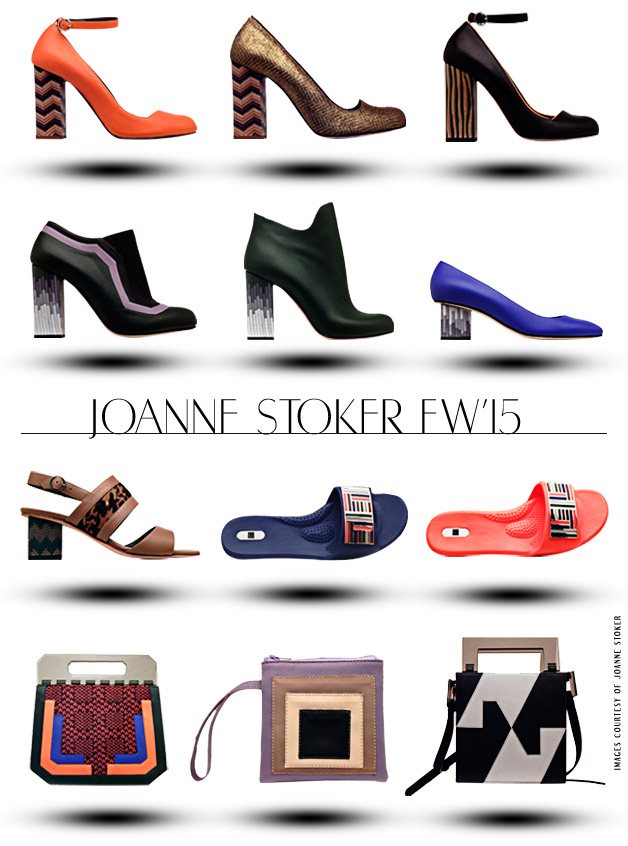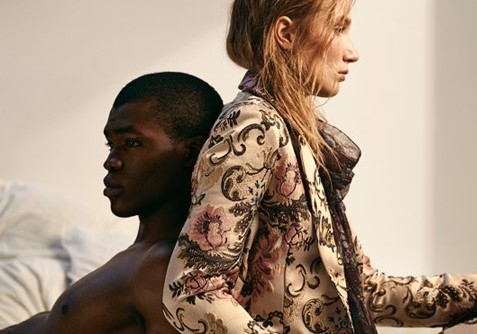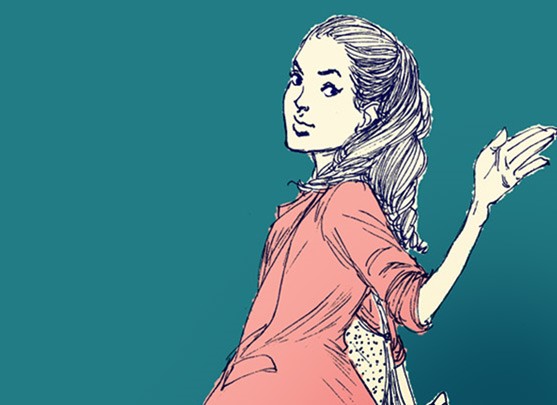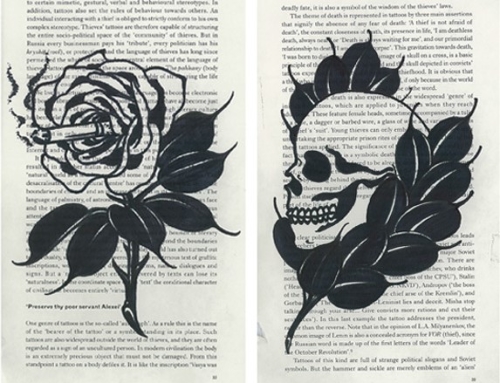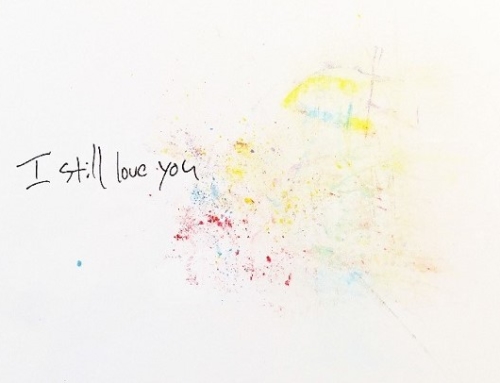Text by Janine Bartels
When arriving at the Victoria and Albert Museum I wondered how I would find shoe designer, Joanne Stoker, in the crowd of people. Then, as I judged my own footwear on this particularly rainy London day, my eyes began darting to everyone else’s shoes in the hall. Of course, surely I would recognize the designer by her footwear. And like that, I spotted Stoker, or more, her red kitten heels. Having found one another, we head towards the “Shoes: Pleasure and Pain” exhibit. Lucky me, I was about to view the exhibit with my own personal expert guide.
Our first stop at the exhibit lands us before a display of Sandy Powell’s glass slipper from Cinderella (2015), where we pause to admire the magic captured in the intricacy of its design. On the topic of fairy tales with shoe-related plot points, Stoker shares that her favourite one has always been The Wizard of Oz, owing to Dorothy’s beautiful ruby slippers. Stoker’s admiration for Dorothy’s whimsical choice in footwear is apparent in her designs. Look to her designs for proof, you’ll spot a red shoe in all her collections.
With that in mind, it’s no wonder that Stoker gravitates towards all of the exhibit’s crimson coloured shoes, including a red-feathered slip-on by Agent Provocateur (1999), accented with a pom-pom toe, that reminds the designer of a pair her grandmother owned. Stoker herself has featured a similar throwback style in her collections, and will in fact be re-introducing kitten heels in spring/summer 2016. Evidently, Stoker loves a blast from the past. As the designer shares, she draws from the previous decades of footwear, extracting the glamour of the era, and is particularly influenced by period architecture and the Art Deco movement.
As we make our way through the exhibit, we chat about Stoker’s new collections. She’ll be launching her FW’15 collection online shortly, and is prepping her SS’16 collection for its upcoming debut at London Fashion Week (LFW) this month. On the LFW agenda is a collaboration with The Powerpuff Girls, as well as a partnership with designer, Eudon Choi, on a runway collection. As we walk, our conversation transitions into design and the importance of comfort, something that shoe designers are not always known for understanding, as the title of the V&A’s exhibit suggests.
For Stoker, heels are more an ode to female empowerment, rather than a wardrobe item meant to increase sex appeal; an idea that also happens to be a major theme in “Shoes: Pain and Pleasure.” “I’m very much about women for women shoes, as opposed to shoes that women wear for men,” proclaims Stoker, as we walk past a pair of shoes that look to side more on the pain side of the spectrum than pleasure. Stoker designs her shoes with a mid-block heel, ensuring that they are comfortable enough to wear daily for long stretches of time. Sky-high heels that ooze sex appeal aren’t Stoker’s thing, although they do find their way into her collections now and then. Stoker points out that male shoe designers often create a sculpture that acts as a pedestal for women to stand on. While on the other hand, her designs mean to quash unnecessary—and uncomfortable—balancing acts. “There is nothing worse than someone who can’t walk in a pair of high heels,” she says. “It’s one of the most unattractive things.” And unbeknownst to onlookers, as Stoker indicates, the fault often lies with the shoe’s designer, not its wearer.
Many of the shoes on display in the exhibit looked nearly impossible to walk in, and in some cases they truly are…historically so. Take the towering blue Vivienne Westwood platforms that supermodel Naomi Campbell took a tumble in on the catwalk. Or the less than practical flats we happened upon at the exhibit. These beauts dated back to approximately 1851, and owed their “elite” wearer’s clause to the delicate silk satin material enveloping them, which rendered them unsuitable to actually walk in. Talk about a status symbol.
With over 250 pairs of shoes on display—both historical and contemporary styles—Stoker and I found many-a-shoe that could pose a challenge to remaining vertical. Seeing such heels (i.e. the more excruciating variety) led to a chat about feet size. From the displays, it was apparent that women’s feet use to be smaller, and according to Stoker’s theory, the widening of women’s feet could be a result of women wearing flats, more often than in the past. After all, during the days when it was logistically possible for courtiers to have silk shoes that were not meant to be walked in, it’s highly unlikely that women needed to cart around fold up ballet slippers or sneakers to make the journey from the castle to the village more manageable.
Approaching the end of the first floor of footwear, Stoker finds an embroidered velvet loafer by Emma Hope she stops to study. Getting her start in the ‘80s, Hope was one of the first graduates from the London College of Fashion’s Cordwainers College to gain attention for her collections. Stoker, herself is a Cordwainers alumni, graduating with an MA in Footwear in 2009, and has enjoyed her fair share of the limelight as well. Her accomplishments and accolades include winning the First into Fashion Award presided over by Jimmy Choo, the designer that mentored her before she established her own label in 2010, and exciting collaborations with fashion designers, such as Matthew Williamson.
Towards the end of the exhibition, we reach a wall of trainers, reminding Stoker to mention that she will also be developing trainers for the spring season. The soles will be made of natural rubber, dyed in a variety of colours with a plain calf-leather upper. For their debut, Stoker plans on keeping designs clean and simple, but after a season or two, we will see where Joanne Stoker’s inspiration takes her. She did mention she wanted to do more work on hand stitched embellishments.
After a day of fawning and dissecting shoes, I exited the exhibit (which ends at the end of January of next year) with an enlightened perspective on footwear. Maybe you have to walk a mile in someone’s shoes to know their true story, but to know the story behind the shoes, you need to spend an afternoon at the V&A…preferably in the company of a shoe designer.




